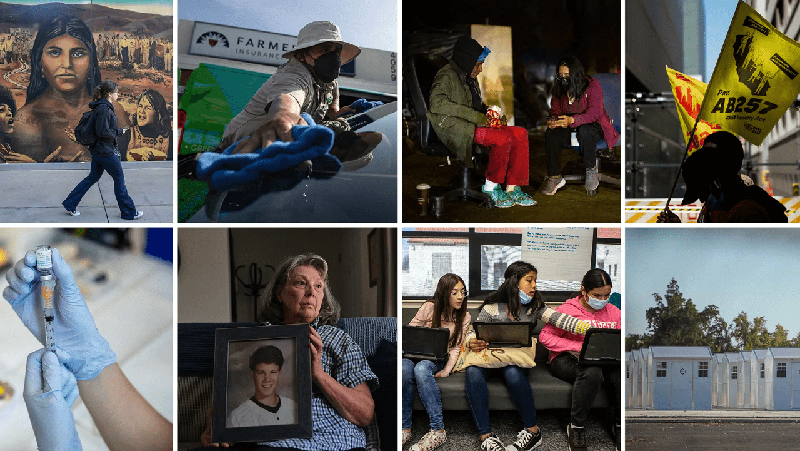CalMatters’ expert journalists around the state created this guide to the state’s efforts to meet the challenges of 2022 and prepare for 2023.

An updated primer from the CalMatters reporting team aims to help Californians understand their state government. Photo collage by Miguel Gutierrez Jr., CalMatters
By DAVID LESHER, CalMatters
Our mission at CalMatters is to help you understand the major issues in this big state and to learn the how and why and who about the decisions made by our policy leaders.
We have a staff of expert journalists around the state who spend each year reading reports, following bills and talking to elected leaders, advocates, experts and those experiencing the problems and changes to life in California. And once again this year, they have created an updated primer on how California state government works and what it’s been up to in the past year.
One of the things we saw in 2022 is that when you essentially live in a one-party state, elections can be predictable. Democrats won all nine statewide campaigns without any serious threat.
In the race for state Controller, the Republican lost to a newcomer by more than 10 percentage points even after gaining nearly every major newspaper endorsement and raising almost twice as much money. Alex Padilla, in his first race for U.S. Senate, was challenged by a perennial Republican candidate he had already defeated for Secretary of State four years earlier by 29 percentage points. Gov. Gavin Newsom was so unconcerned about his re-election that he raised barely a quarter of the money he had in the 2021 recall attempt and he spent most of what he raised on ballot measures or for television commercials in Texas and Florida criticizing their Republican governors.
With little to motivate voters to the polls and a few congressional races in California that could determine control of the U.S. House, Democrats in the Legislature even placed a measure to protect abortion rights on the ballot at least in part to encourage their voters to turn out. There were no other measures that appeared likely to motivate casual voters.
The most expensive ballot fight in California history saw about a half billion dollars spent on two sports gambling measures with both losing by wide margins. Voters rejected a measure about kidney dialysis for the third time. They upheld a ban on flavored tobacco. And they granted more money to arts and music in public schools.
Perhaps the most interesting question on the California ballot in 2020 was whether voters would raise taxes on millionaires to pay for electric cars and charging stations. Californians had already raised taxes on the wealthy twice in recent years, raising the rate for top earners higher than any other state. The measure also responded to the high priority California voters place on climate change policy. But Proposition 30 lost by a wide margin with experts saying the biggest reason was opposition from the governor. Newsom didn’t think a tax increase was necessary and he appeared in TV commercials to say the measure was a “Trojan horse” attempt by the rideshare company Lyft, the biggest funder, to have taxpayers help it comply with a requirement to log 90% of its miles in electric cars by 2030.
Outside of the election, California saw a record $100 billion surplus in its state budget, which grew to an unprecedented $308 billion, the centerpiece of which was a $9.5 billion tax rebate that sent checks to most Californians. Much of the surplus was spent on other one-time costs, such as paying down debt. But the budget raised money for social services enough to reduce the poverty rate. It saw a windfall to public schools, although the first test scores since the pandemic revealed a concerning drop in academic performance.
The budget also spent more money to increase housing affordability and address homelessness, but housing production remained slow and a new count of the homeless found the population grew by about 15%.
Read more of ‘2022-2023 Primer: California Policy and Politics’ on CalMatters.
David Lesher is co-founder and editor-in-chief of CalMatters.
CalMatters.org is a nonprofit, nonpartisan media venture explaining California policies and politics.
Articles which extol the virtues of a report or article put out by a local newsroom.